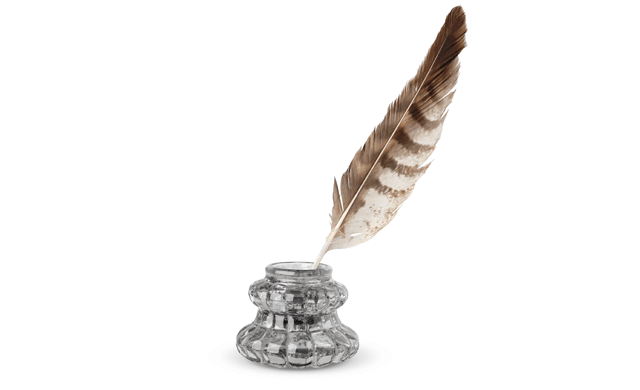Between 1 October and 3 November 2016, Darlington Civic Theatre mounted an exhibition in Crown Street library entitled 'Dickens in Darlington'. In the second post in a series, we publish the content of the exhibition online.
One o’clock! Parties returning from the different theatres foot it through the muddy streets; cabs, hackney-coaches, carriages, and theatre omnibuses, roll swiftly by; watermen with dim dirty lanterns in their hands, and large brass plates upon their breasts, who have been shouting and rushing about for the last two hours, retire to their watering-houses, to solace themselves with the creature comforts of pipes and purl; the half-price pit and box frequenters of the theatres throng to the different houses of refreshment; and chops, kidneys, rabbits, oysters, stout, cigars, and ‘goes’ innumerable, are served up amidst a noise and confusion of smoking, running, knife-clattering, and waiter-chattering, perfectly indescribable.
The more musical portion of the play-going community betake themselves to some harmonic meeting. As a matter of curiosity let us follow them thither for a few moments.
In a lofty room of spacious dimensions, are seated some eighty or a hundred guests knocking little pewter measures on the tables, and hammering away, with the handles of their knives, as if they were so many trunk-makers. They are applauding a glee, which has just been executed by the three ‘professional gentlemen’ at the top of the centre table, one of whom is in the chair - the little pompous man with the bald head just emerging from the collar of his green coat. The others are seated on either side of him - the stout man with the small voice, and the thin-faced dark man in black. The little man in the chair is a most amusing personage, - such condescending grandeur, and such a voice!
Sketches by Boz, ‘Scenes’ Chapter II - ‘The Streets – Night’, 1836
UP AND DOWN THE CITY ROAD, IN AND OUT THE EAGLE: DICKENS AND MUSIC HALL
In his early work, Sketches by Boz, Dickens observes the contrast between the gentility of legitimate theatre and the rowdiness of music hall. He was familiar with music hall, which developed in London in his own lifetime from the taverns and coffee houses popular with working class men. By the 1830s these taverns had rooms where there was regular musical entertainment several times a week. For the middle classes there were also song-and-supper rooms with hot food and entertainment. Dickens was a regular at one of these, the Eagle, which having been built in 1821 was one of the first and most prominent and which was immortalised not only in Sketches by Boz but also in the popular song ‘Pop Goes the Weasel’. Purpose-built halls were soon established, such as the Canterbury Hall in Lambeth, run by Charles Morton, the publican of the Canterbury Tavern. Unlike the taverns, the Canterbury Hall held 700 people who paid sixpence to get in. They sat at tables and food and drink were served throughout the show. Proceedings were presided over by the chairman, the ‘pompous little man’ Dickens describes in Sketches by Boz.
As Dickens intimates, music halls were raucous places. In an effort to bring about an air of respectability, Charles Morton even introduced ‘Ladies’ Thursdays’ where ladies, who were not usually welcome in the audience, could accompany gentlemen. Men, however, did not necessarily take their wives, preferring the prostitutes who made themselves available there. And music hall was interactive, with audiences singing along, heckling, and shouting out to the performers. Objects such as bottles or shoes might be thrown so sometimes waiters had to carry bottles chained to their trays, and the orchestra in their pit were protected from projectiles by a steel grill. To try to keep order there were even ‘bouncers’ dressed as policemen trying to quell the worst behaviour. Music hall songs, which became associated with particular artistes and which audiences would enjoy hearing time and time again, also dealt with the harsh realities of working class life, such as working conditions, debt and unfaithful partners. Needless to say, they were often very sentimental.
THE PEASE FAMILY VS JOHN PRICE EDWARDS
At the time Dickens was frequenting the Eagle and publishing Sketches by Boz, saloons were popular in Darlington as well as in London as a destination for a good night out. One of the most enduring was in a room at the end of a yard on the north side of Blackwellgate, probably above Samuel Graves’ brewery. Around 1840, Richard Thorn, who had been presenting theatre from a barn on Clay Row, moved into the Blackwellgate long room and reopened it as the Albert Saloon. It billed itself as ‘by working class people for working class audiences’.
As well as this, itinerant players were performing in a tent near the wall of the Friends Meeting House graveyard off Skinnergate, as they had been doing since around 1768. An impresario, John Price Edwards, put on travelling stock companies, which would perform the songs of the day, such as ‘Pretty Polly Perkins’ and ‘When Johnny Came Marching Home’, as well as plays such as The Newcastle Footman and even some Shakespeare.
Edwards’ unlicensed theatre, though popular, was regarded as noisy and a threat to public order. He began to fight a long-running battle with the prominent Quaker Pease family which was very much opposed to the growth of such entertainment in Darlington, with Joseph Pease stating ‘many young men have been ruined for life by theatres and many a young woman’s character has been blasted’.
One way around this might have been to grant Edwards a licence: licensed theatres, unlike saloons, were not permitted to sell alcohol. Yet the teetotal Pease family opposed the granting of such a licence, using any objection they could muster. Eventually, Edwards won his hard-fought battle, but in 1856 the Pease family accused him of larceny, for making an illegal connection to his gas meter in his newly-constructed barn theatre which had replaced the tent. Although Edwards was adamant he had paid for all the gas used, he was still found guilty and sentenced to a month’s hard labour. Nevertheless, he valiantly continued to run his theatre. When he retired in 1860, his successor Thomas Wyld took up the never-ending battle for the annual renewal of the licence, with the Pease family still staunchly in opposition. Despite this, the theatre was able to renew its licence and renamed itself as the Theatre Royal on 21 March 1861.
THEATRE ROYAL, DARLINGTON
More salubrious premises were soon required and plans were drawn up for a permanent theatre to be built on Buck’s Close, next to the Cocker Beck on High Northgate. The foundations for the new Theatre Royal were laid on 26 October 1864. Despite being contained indoors, audiences at the new theatre were apparently no less rowdy, the Darlington & Stockton Times later describing them as ‘individuals of free and easy turn’ who ‘affected short pipes, hoarse cries and were far more energetic in their support of their favourite actors than the modern critical and calculating theatregoer.’
The Theatre Royal had a chequered existence. It continued to be a target for the Pease family, and with failing finances it closed in 1868 to be pulled down in 1873. But there was still a great appetite for theatre in Darlington, with pantomimes and circuses run by Frederick Allen mounted on Green Tree Fields behind Skinnergate. So the Theatre Royal was rebuilt in 1881, only to burn down two years later in a fire caused by a firework display taking place on a stage covered in sawdust: a recipe for disaster. In 1887 the Theatre Royal was reborn from the ashes and at last enjoyed a period of sustained success, paving the way for the creation of The New Hippodrome and Palace Theatre of Varieties on Parkgate.
FROM EAST END TO WEST, FROM PLMOUTH TO SUNDERLAND, AND FROM MUSIC HALL TO VARIETY THEATRE: THE BOOM AND CHANGE OF MUSIC HALL
Following the success of early halls, there was a rapid expansion across London, until by 1875 there were 375 in greater London alone. In some, rows of seats were added, so they began to resemble the theatres we know today. And women gradually became a more accepted part of the audience, particularly in the West End of London, where by the 1880s and 1890s, the Empire and Alhambra, both on Leicester Square, the Palace on Shaftesbury Avenue, and later the Coliseum on St Martin’s Lane, all began to attract an upper-class clientele who came out in their finest clothes and jewels.
By the 1860s music hall bills comprised up to 20 different acts, including singers, dancers, comedians, acrobats and a growing number of women performers. There was also a variety of animal and speciality acts, such as magicians or illusionists which Dickens would have enjoyed as he was a keen amateur conjurer. The most popular performers would take to the stage in several halls each night, crossing London in carriages. Doubtlessly, this was tiring, but worth it for the leading stars who were very well paid.
Although music hall began in London, the trend for light entertainment rapidly spread across the UK with performers having the opportunity to further their careers by touring up and down the country, making use of the developing railway networks. (In Darlington – the home of the railway – ‘turns’ would arrive at Bank Top station with the fish that was to be sold at Monday market.) Many of these theatres were constructed in the late 19th and early 20th centuries and were purpose-built as Empires, Palaces and Hippodromes, some precious few of which are still standing today. Different social classes were catered for, with the working classes sitting in the gallery and segregated to the extent that they would even enter the building through a different door. The audience sat in rows, in the dark, concentrating on the performance rather than on food and drink, and while they still joined in, singing along or jeering an act they did not rate highly, they were less rowdy than in the days of the Eagle. Music hall had given birth to variety theatre.
THE NEW HIPPODROME AND PALACE THEATRE OF VARIETIES
The founding managing director of Darlington’s own New Hippodrome and Palace Theatre of Varieties, Signor Rino Pepi, had enjoyed a successful career in music hall as one of the world’s top proteans, or quick-change artists. But in the 1900s, aged just 30, Pepi made one final quick-change: into a theatre manager. In 1907, with a grand civic event and a twice-nightly bill, he opened his Darlington venue, The New Hippodrome and Palace Theatre of Varieties, which was to become the last surviving working theatre in an empire which over the years included Barrow-in-Furness, Middlesbrough, Bishop Auckland and Shildon. Darlington Civic Theatre, as it has been known since the 1950s, closed its doors temporarily in May 2016 for a £12 million restoration and modernisation, re-opening in autumn 2017, 110 years after it was built.
Empires, Alhambras, Hippodromes, Pavilions, Oxfords, Tivolis. Theatre managers did not choose these names at random. There was a pecking order, and the word picked out in lights at the front of the building reflected its size and the standard of act the manager engaged, or aspired to. Hippodromes (from the Greek hippodromos, horse circus) specialised in equestrian and animal acts, acrobatics and pantomime. Darlington’s Hippodrome was a classic example, right up to its water tower which was designed for aquatic acts. So the restored theatre becomes known as Darlington Hippodrome, a version of its original name.

